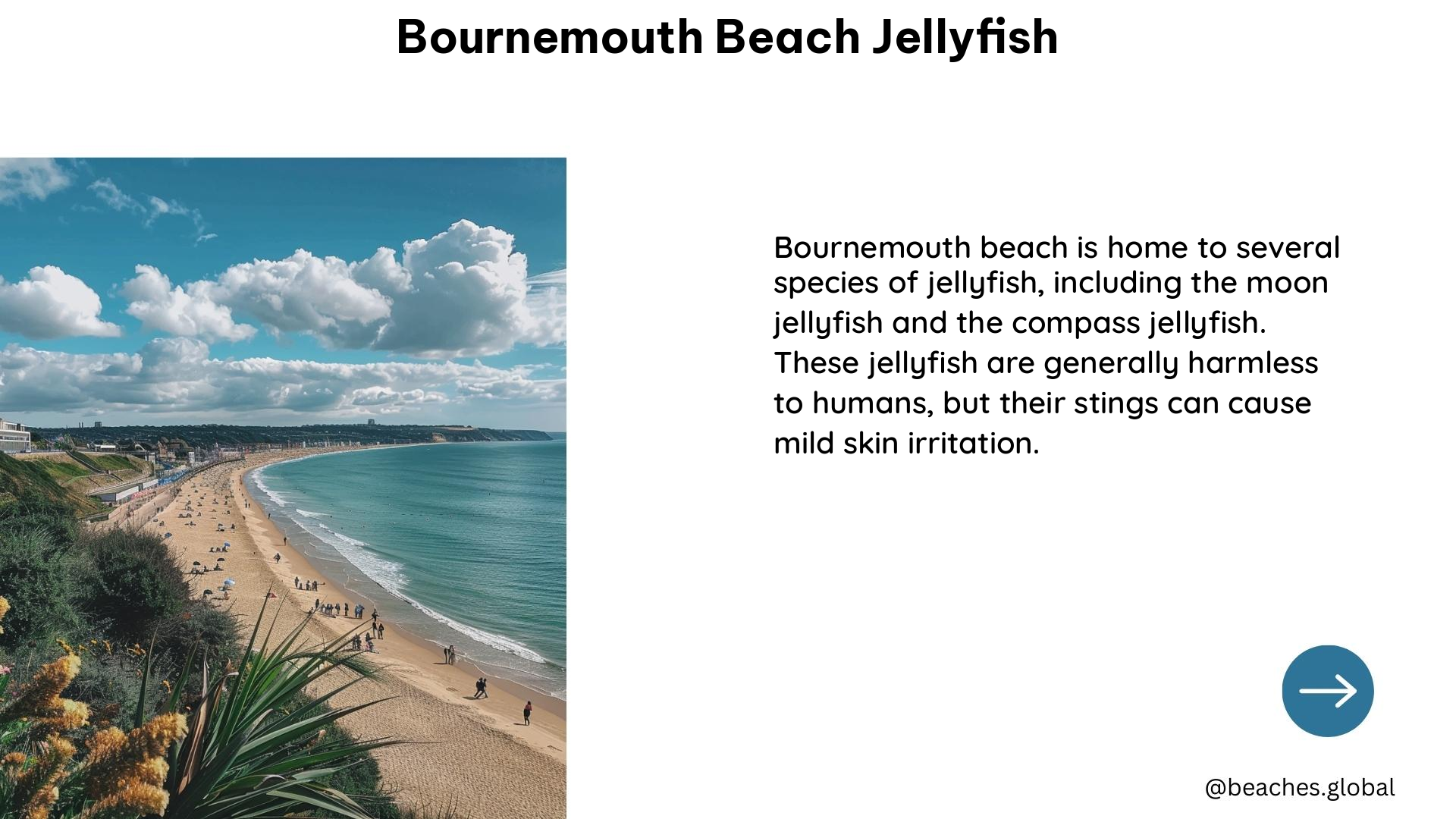Bournemouth Beach, a picturesque coastal destination in Dorset, England, is renowned for its stunning sandy shores and crystal-clear waters. However, visitors to this popular beach must be aware of the presence of jellyfish, which can be a common sight, particularly during the summer months. In this comprehensive guide, we’ll explore the types of jellyfish found in Bournemouth, their behavior, and the precautions you can take to ensure a safe and enjoyable beach experience.
Jellyfish Species at Bournemouth Beach
Bournemouth’s coastal waters are home to several species of jellyfish, each with its own unique characteristics and potential for stinging. The most commonly encountered jellyfish in this area include:
-
Barrel Jellyfish: The largest jellyfish species found in the UK, the barrel jellyfish can grow up to 1 meter in diameter. These gentle giants are typically harmless to humans, but their sheer size can be an impressive sight.
-
Compass Jellyfish: Easily identified by their distinctive compass-like markings, these jellyfish are relatively small, with a bell diameter of around 10-20 cm. While their sting is not considered life-threatening, it can still be painful.
-
Moon Jellyfish: One of the most common jellyfish species in Bournemouth, the moon jellyfish is characterized by its translucent, saucer-shaped bell and four distinct gonads. Their sting is generally mild, causing only a slight irritation.
-
Lion’s Mane Jellyfish: Although less common, the lion’s mane jellyfish has been spotted in Bournemouth’s waters. This species is known for its long, trailing tentacles and can deliver a more potent sting.
Jellyfish Sightings and Monitoring

Jellyfish sightings in Bournemouth are closely monitored by various organizations, including the local council and marine conservation groups. Meduseo, a jellyfish weather service, provides a live map of jellyfish sightings in Bournemouth and other European beaches, allowing visitors to stay informed about the current situation.
During the summer months, when jellyfish populations tend to peak, lifeguards and beach patrols are on the lookout for any jellyfish activity and will advise beachgoers accordingly. It’s important to heed their warnings and follow their guidance to ensure a safe and enjoyable visit.
Interacting with Jellyfish at Bournemouth Beach
While jellyfish stings can be painful, they are rarely life-threatening. However, some individuals may have severe allergic reactions, so it’s crucial to be aware of the risks and take appropriate precautions.
If you do encounter a jellyfish, it’s best to avoid touching or handling it. Instead, observe from a safe distance and report any sightings to the lifeguards or beach patrols. If you are stung, rinse the affected area with seawater (not freshwater) and avoid scratching or rubbing the sting. Seek medical attention if the symptoms persist or worsen.
Preventive Measures
To minimize the risk of jellyfish stings at Bournemouth Beach, consider the following preventive measures:
-
Swim in Designated Areas: Stick to areas with lifeguard supervision, as they can provide guidance on current jellyfish activity and sting treatment.
-
Wear Protective Clothing: Wearing a wetsuit, rash guard, or lycra suit can offer some protection against jellyfish stings.
-
Avoid Touching Jellyfish: Admire the jellyfish from a safe distance and do not attempt to touch or handle them.
-
Stay Informed: Check the Meduseo website or local news sources for updates on jellyfish sightings and conditions before your visit.
-
Follow Beach Signage: Pay attention to any warning signs or flags indicating the presence of jellyfish or other marine hazards.
By being aware of the jellyfish species found in Bournemouth, monitoring sightings, and taking appropriate precautions, you can enjoy a safe and memorable visit to this beautiful coastal destination.
Visiting Bournemouth Beach
Bournemouth Beach is a free-to-visit destination, open to the public all year round. During the peak summer season, lifeguard services are typically available from May to September, providing an added layer of safety and assistance.
There are several car parks located near the beach, with rates varying depending on the location and duration of your stay. Visitors can also explore the nearby promenade, which offers a range of dining, shopping, and entertainment options.
Conclusion
Bournemouth Beach is a stunning coastal destination that attracts visitors from around the world. While the presence of jellyfish is a natural part of the marine ecosystem, being informed and taking the necessary precautions can help ensure a safe and enjoyable beach experience. By following the guidelines outlined in this guide, you can fully immerse yourself in the beauty of Bournemouth’s coastal waters while respecting the delicate balance of the local marine life.
References:
– https://www.bbc.com/news/uk-england-dorset-65989933
– https://meduseo.com/en/location/Bournemouth-5848738
– https://www.bournemouthecho.co.uk/photos/gallerycollection/jellyfish/
– https://www.bournemouthecho.co.uk/news/22421068.giant-jellyfish-spotted-swimming-boscombe-pier/
– https://www.dorset.live/news/dorset-news/sea-creatures-you-need-watch-7239287
